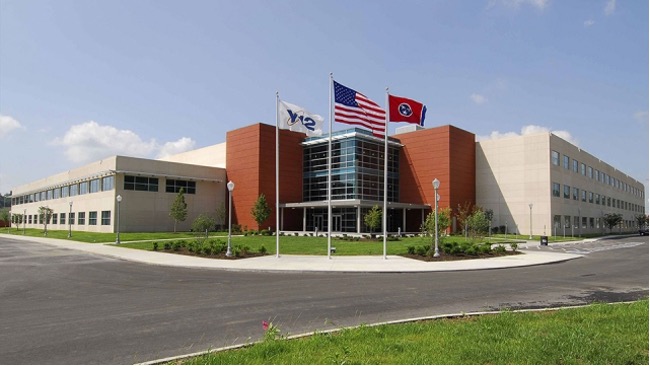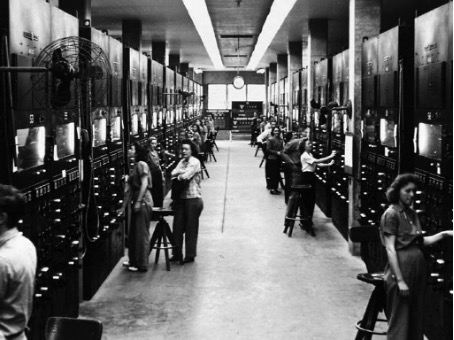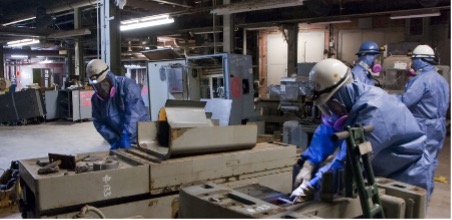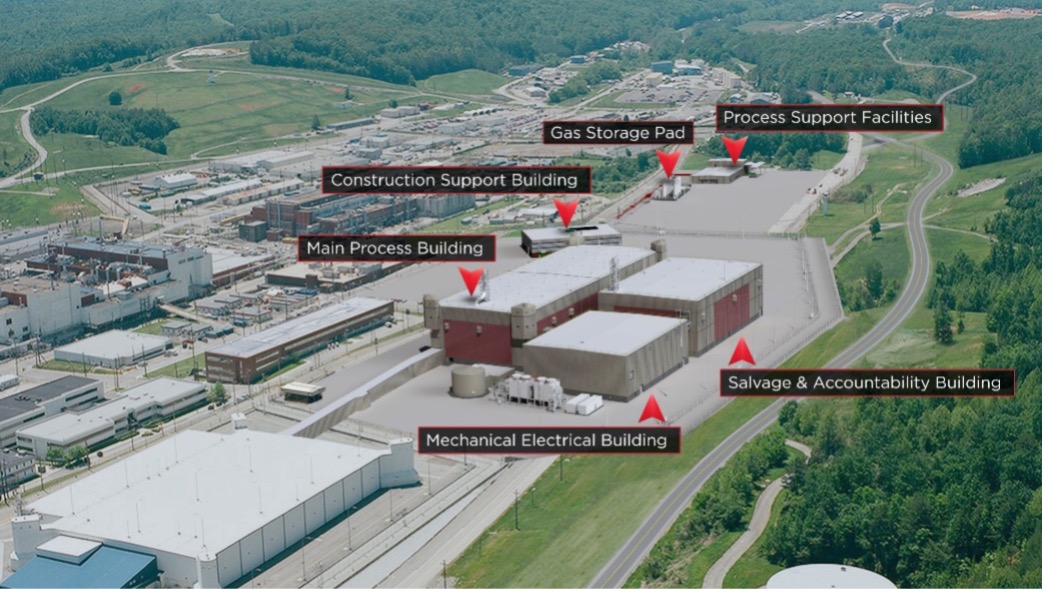The World’s Most Secure Buildings: Y-12 National Security Complex
May 17, 2023
The Y‑12 National Security Complex is a premier manufacturing facility that plays a vital role in the Department of Energy’s Nuclear Security Enterprise. It is one of six production facilities in the National Nuclear Security Administration’s (NNSA’s) Nuclear Security Enterprise.
Y‑12 helps ensure a safe, effective United States nuclear weapons deterrent. It has three primary national security missions protecting the nation and its allies around the world: to maintain the U.S. nuclear stockpile, to reduce global threats, and to fuel the U.S. Nuclear Navy. Since 1943, Y‑12 has played a key role in strengthening U.S. national security and decreasing the global threat from weapons of mass destruction.
Today, Y‑12 has evolved to become the complex the country looks to for support in protecting America’s future, developing innovative solutions in manufacturing technologies, prototyping, safeguards and security, technical computing, and environmental stewardship.
What makes the Y‑12 National Security Complex one of the world’s most secure buildings? Read on to find out.

Facts About the Y‑12 National Security Complex
-
The Y-12 National Security Complex is located in Oak Ridge, Tennessee, and covers an area of 811 acres
-
Y-12 was originally built as part of the Manhattan Project during World War II and was responsible for producing the enriched uranium used in the first atomic bomb
-
Y-12 is named after its original code name, “Y-12 Area”, which was assigned to it by the Manhattan Project
-
The Y-12 National Security Complex is the nation’s primary facility for manufacturing, storing, and maintaining the United States’ nuclear weapons arsenal
-
Y-12 is also responsible for the development and production of components for nuclear weapons, as well as conducting research and development on new technologies related to national security
-
The Y-12 National Security Complex is home to the world’s most powerful computing facility dedicated to solving complex problems in national security
-
Y-12 has a long history of supporting scientific research, including work on the development of nuclear medicine, materials science, and environmental science
-
Y-12 offers public tours, providing visitors with a unique opportunity to learn about the facility’s history and current mission
-
The Y-12 National Security Complex is a significant employer in the Oak Ridge area, with over 7,000 employees and an annual operating budget of over $1 billion
-
Y-12 lends its specialized expertise to other federal agencies, such as the U.S. Department of Defense and Homeland Security, state and local governments, and private-sector companies
-
Y-12 has developed state-of-the-art capabilities in three core areas: nuclear technology and materials, security and consequence management, and manufacturing and technical services
Construction and Operations of the Y-12 National Security Complex
The Y-12 National Security Complex is a critical part of the United States’ nuclear weapons infrastructure. The complex has a rich history dating back to its construction in 1943 as part of the Manhattan Project, and it has played a vital role in U.S. national security ever since.
Let’s explore the construction and operations of the Y-12 National Security Complex, including its facilities, capabilities, and the technologies used to ensure its safety and security.
Background and Purpose
The Y-12 National Security Complex was built during World War II as part of the Manhattan Project, a top-secret government program to develop the first atomic bomb. The purpose of Y-12 was to produce enriched uranium for the bomb.
Site Selection and Acquisition
The site for Y-12 was selected for its remote location and abundant water supply. The government acquired the land through eminent domain, forcing over 1,000 families to relocate.
Construction of the Buildings
Construction of the Y-12 complex began in 1943 and was completed in just 14 months. The complex consists of multiple buildings, including the Beta-3 Calutron Building, where the uranium enrichment process took place, and the 9731 and 9204-3 Buildings, which were used for uranium storage and processing.
Recruitment of Workers
To staff the Y-12 complex, the government recruited thousands of workers from across the country, many of whom were women. The workers were sworn to secrecy and given little information about the nature of their work.

Operation of the Complex
Y-12 began producing enriched uranium in November 1943, and by August 1945, it had produced enough material for the first atomic bomb. After the war, Y-12 continued to produce nuclear materials for the government, and in the 1950s, it began to focus on the development of nuclear weapons components.
Expansion and Modernization
Over the years, Y-12 has undergone significant expansion and modernization to keep up with the changing needs of national security. In the 2000s, the complex was modernized to improve safety, security, and efficiency, and to allow for the production of new nuclear weapons components.
Current Operations
Today, the Y-12 National Security Complex is a vital part of the United States’ nuclear weapons infrastructure, responsible for manufacturing and maintaining nuclear weapons and conducting research and development on new technologies related to national security.

What Are the Key Elements of the Y-12 National Security Complex?
Y-12 works with NNSA and other federal agencies to secure vulnerable nuclear materials domestically and internationally. Activities include detection, removal, and security of nuclear material, and ultimately making weapons material available for peaceful uses, such as fueling research reactors and producing medical isotopes.
The Y-12 National Security Complex includes a variety of facilities and capabilities related to nuclear weapons production, storage, and maintenance, as well as scientific research and development. Here are some of the key elements of the complex:
Uranium Processing Facilities
Y-12 consists of multiple buildings dedicated to the processing of enriched uranium, including the Beta-3 Calutron Building, which was used during World War II to produce uranium for the first atomic bomb.
Nuclear Materials Storage
Y-12 also has buildings for the storage of nuclear materials, including the 9731 and 9204-3 Buildings, which were used during World War II to store and process uranium.
Nuclear Weapons Components Manufacturing
Y-12 is responsible for the production of components for nuclear weapons, including secondary stages, fuzes, and neutron generators.
Research and Development
Y-12 conducts research and development on new technologies related to national security, including advanced manufacturing, nonproliferation, and cybersecurity.
National Strategic Computing Center
Y-12 is home to the National Strategic Computing Center, which houses some of the world's most powerful supercomputers and is used for a variety of scientific and national security applications.
Environmental Management
Y-12 is also responsible for the environmental management and cleanup of its facilities and surrounding areas, which includes the management of hazardous waste, groundwater monitoring, and ecological restoration.
Security and Protection
The complex has extensive security and protection measures in place to safeguard its facilities and nuclear materials, including armed guards, physical barriers, and advanced surveillance and detection systems.

What Makes the Y-12 National Security Complex one of the World’s Most Secure Buildings?
The Y-12 National Security Complex is often regarded as one of the most secure buildings in the world due to the extensive security measures and protocols in place. Here are some of the key factors that contribute to its high level of security:
Physical Barriers
Y-12 has multiple layers of physical barriers, including fences, walls, and vehicle barriers that prevent unauthorized access to the complex.
Armed Security Personnel
The complex has a large security force of highly trained, armed guards who are responsible for protecting the facility and its nuclear materials.
Advanced Surveillance Systems
Y-12 has an extensive network of surveillance cameras, motion sensors, and other detection systems that monitor the complex 24/7 and alert security personnel to any unauthorized activity.
Access Control Measures
Access to the complex is strictly controlled, with multiple checkpoints and security screenings for employees, visitors, and contractors. All personnel must have a security clearance and undergo regular background checks.
Nuclear Materials Protection
Y-12 has specialized facilities and protocols in place for the protection and storage of nuclear materials, including vaults and containers that are designed to withstand extreme conditions and prevent theft or unauthorized access.
Emergency Response Capabilities
Y-12 has a comprehensive emergency response plan in place that includes regular drills and exercises to ensure that personnel are prepared to respond to any security threats or incidents.
Culture of Security
Perhaps the most important factor in Y-12’s security is its culture of security, which emphasizes the importance of safety and security in all aspects of the complex’s operations. This culture is instilled in all employees, from top management to entry-level staff, and is reinforced through regular training and education programs.
Secure Your Facility With Identiv
Identiv’s flexible physical access control system (PACS) and video intelligence solutions deliver the highest security at the lowest cost. Regardless of your physical location, effortlessly manage access control through our robust, feature-rich systems, hardware, and software.
To learn more about our PACS solutions, contact us at +1 888.809.8888 or
sales@identiv.com.